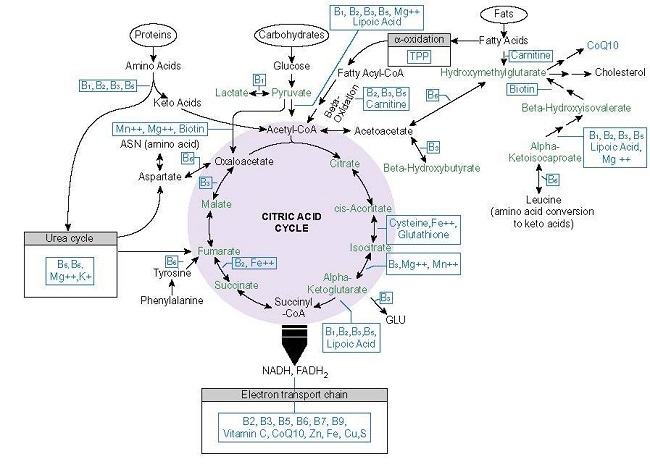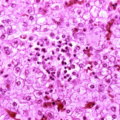I have written many posts on Hormones Matter and have tried to answer the questions arising from each post. These questions and my answers have been so repetitive that I decided to try to make it clear what “energy medicine” is all about and why it differs from conventional medicine. It is only natural that the posted questions are all built on our present ideas about health and disease. What I am about to say is that the present medical model has outgrown its use. Therefore it is obvious that I must discuss what this means. First of all, why do we need a “medical model”? In fact, what is the difference between complete health and its lack? The Oxford English dictionary gives the definition of disease as “a serious derangement of health, disordered state of an organism or organ”
The American Model of Medicine
As I have said before, the present American medical model was aimed at making a diagnosis of one of many thousand described diseases. It was devised from the Flexner report of 1910 that was initiated by Rockefeller. Rockefeller wanted to make medical education adhere to a common standard, thus creating the present “medical model”. The Flexner report used the methodology of diagnosis that was current in Germany. This stated that the patient’s report to a physician is called “history”, involving the patient’s description of symptoms and their onset. From this, the physician may or may not have an idea what is wrong. The next part is the physical exam where a hands-on search of the patient’s body is made for evidence of disease. This is extremely complex when put fully into clinical operation and also may or may not provide clues to a diagnosis. The third operation is laboratory testing and it is this constellation of abnormal tests that provide scientific evidence for the nature of the disease. Each test has been researched and aside from one that is either positive or negative, others have a normal range reported in numerical terms. Perhaps, as an example, the test for cholesterol level is the best known. Each test has to be interpreted as to how it contributes to arriving at a diagnosis. Finally, the physician has to try to decide whether medical or surgical treatment must be offered. Please note that the surgical removal of a sick organ may be the signature of medical failure, for example, removing part of the intestine in Crohn’s disease, for it represents a missed opportunity to treat earlier in the disease process.
Laboratory Tests and A Drug For Every Disease
It is the constellation of symptoms described by the patient and the abnormalities found by the physical examination that constitute a potential diagnosis to formulate what laboratory tests should be initiated. It is the constellation of laboratory tests that may or may not provide the proof. There are problems with this. For instance, there may be test items in the constellation that create confusion, such as “it might be disease A or disease B. We are not sure”. Tests that are “borderline” positive are particularly confusing. The diagnosis finally depends often on who was the first observer of these constellations. For example a person by the name of Parkinson and another person by the name of Alzheimer, each described clinically observed constellations that gave rise to Parkinson’s disease and Alzheimer’s disease. Since they were first described, the pathological effects of each disease have been researched in painstaking detail, without coming to the conclusion of the ultimate cause. Finally, the pharmaceutical industry has indulged in complex research to find the drug that will reverse the pathological findings and produce a cure. Because this concept rides right through the objective, each disease is thought to have a separate underlying cause and a separate underlying cure in the shape of a new “miracle drug”. Witness the recent revival of a drug that was initially found to be useless in the treatment of Alzheimer’s disease. This revival depends on the finding of other pathological effects discovered in the disease, suggesting new clinical trials. When you take all these facts into consideration, it is a surprisingly hit and miss structure. For example, we now have good reason to state that a low cholesterol in the blood is more dangerous than a high one. Why? Because cholesterol is made in the body and is the foundation material for building the vitally important stress hormones. Cholesterol synthesis requires energy and is a reflection on energy metabolism when it is in short supply.
The Physicians Desk Reference, available in many public libraries, contains details concerning available drugs. Each drug is named and what it is used for, but often there is a note saying that its action is poorly understood. Just as often, there may be one or two pages describing side effects. In fact, the only drugs whose action is identified with cause are the antibiotics. The rest of them treat symptoms but do not address cause. Antibiotics affect pathogenic bacteria but we all know that the bacteria are able to become resistant and this is creating a problem for the near future. It is interesting that Louis Pasteur spent his career researching pathogenic microorganisms. However, on his deathbed it is purported that he stated “I was wrong, it is the defenses of the body that count”.
It must be stated that the first paradigm in medicine was the discovery of pathogenic microorganisms and their ability to cause infections. Many years were spent in trying to find ways and means of killing these organisms without killing the patient. It was the dramatic discovery of penicillin that led to the antibiotic era. I like to think that Louis Pasteur may have suggested the next paradigm, “assist the body defenses”.
Energy Medicine: A New Paradigm for Understanding Health and Disease
When a person is seen performing on a trampoline, an observer might say “hasn’t he got a lot of energy!” without thinking that this represents energy consumption. Energy has to be captured in the body and is consumed in the physical action on the trampoline. Many people will drink a cup of coffee on the way to work believing that it “creates” energy. The chemical function of caffeine stimulates action that consumes energy, giving rise to a false impression. Every physical movement, every passing thought, however fleeting in time, requires energy consumption. The person who has to drink coffee to “get to work”, is already energy insufficient. He/she can ill afford this artificial consumption of the available energy.
I am going to suggest that the evidence shows “energy medicine” may indeed be the new paradigm, so we have to make sure that anyone reading this is conversant with the concept of energy. In physics, “energy is the quantitative property that must be transferred to an object in order to perform work on, or heat, the object. Energy is a conserved quantity, meaning that the available energy at the beginning of time is the same quantity today. The law of conservation of energy states that “energy can be converted in form but not created or destroyed”. Furthermore, Einstein showed us that matter and energy are interconvertible. That is why the word “energy” is such a mystery to many people. What kind of energy does the human body require?
We are all aware that the electroencephalogram and the electrocardiogram are tools used by physicians to detect disease in the brain and the heart. If that means that our organs function electrically, then where does that energy come from? We do not carry a battery. We are not plugged into a wall socket and the functional capacity of the human body is endlessly available throughout life. The only components that keep us alive are food and water. Everyone knows that foods need to contain a calorie-delivering and a non-caloric mixture of vitamins and essential minerals. The life sustaining actions of these non-caloric nutrients is because they govern the process of energy capture by enabling oxygen consumption (oxidation). They also govern the use of the energy to provide physical and mental function.
The calorie bearing food, consisting of protein, fat and carbohydrate is used to build body cell structure. This is called anabolic metabolism. If body structure is broken down and destroyed, weight is lost and the patient is sick. This is called catabolic metabolism. In healthy conditions, food is metabolized to form glucose, the primary fuel.
Thiamine (vitamin B1), together with the rest of the B complex, governs oxidation, the products of which go into a cellular “engine” called the citric acid cycle. This energy is used to form adenosine triphosphate (ATP) that might be referred to as a form of “energy currency”. Without thiamine and its vitamin colleagues in the diet, ATP cannot be formed. Research for the next stage of energy production has yielded insufficient information as yet concerning production of electrical energy as the final step. The evidence shows that thiamine may have an integral part in this electrification process, although much mystery remains. Suffice it to say that we are electrochemical “machines” and every physical and mental action requires energy consumption.
Maybe the Chinese Were Right
In the ancient Chinese culture, an energy form called Chi was regarded as the energy of life itself. Whether this really exists or not and whether it is in some way connected to the auras purported to surround each person’s body is still conjectural. It would not be too absurd to suggest that it might be as yet an undiscovered form of energy and that it is truly a reflection of good health. My personal conclusion is that some form of electromagnetic energy is the energy that drives our physical and mental functions and that it is transduced in the body from ATP, the storage form of chemical energy. There is no doubt that acupuncture does work and certainly encourages the conclusion that the meridians described by the ancient Chinese thinkers are an important evidence of electrical circulation. There is burgeoning evidence that energy is the core issue in driving the complex process of the body’s ability to heal itself. The idea that the physician or anyone else that purports to be a “healer” is a myth, because we have the magic of nutrients that are capable of stimulating energy production as already described. The “bedside manner” is valuable because a sense of confidence and trust results in energy conservation. Remember the proverb “worry killed the cat”.
Illness and the Lack of Energy
As essentially fragile organisms, we live in a situation of personal stress. We are surrounded by micro-organisms ready to attack us. We have built a culture that is enormously stressful in many different ways, I turn once again to the writings of Hans Selye, who advanced the idea that we are suffering from “the diseases of adaptation”. He recognized that some form of energy was absolutely essential to meet any form of physical or mental stress. One of his students was able to produce the general adaptation syndrome in an animal by making the animal thiamine deficient. Energy metabolism in Selye’s time was poorly understood. Today the role of thiamine is well known. As I have described in other posts and in our book, the lower part of the brain that controls adaptive mechanisms throughout the body is highly sensitive to thiamine deficiency. Alcohol, and sugar in all its forms, both overload the process of oxidation. Although energy metabolism depends on many nutrients, thiamine is vital to the function of mitochondria and its deficiency appears to be critical. Because the brain and heart are the dominant energy consumers it is no surprise to find that beriberi has its major effects in those two organs. Symptoms are just expressions of oxidative inefficiency of varying severity. This is the reason why 696 medical publications have reported varying degrees of success in the treatment of 240 diseases with thiamine. Its ubiquitous use as a drug depends on its overall ability to restore an adequate energy supply by stimulating mitochondrial function. It is also why I propose that energy deficiency is the true root of modern disease.
We Need Your Help
More people than ever are reading Hormones Matter, a testament to the need for independent voices in health and medicine. We are not funded and accept limited advertising. Unlike many health sites, we don’t force you to purchase a subscription. We believe health information should be open to all. If you read Hormones Matter, like it, please help support it. Contribute now.
Yes, I would like to support Hormones Matter.
Image by Gerd Altmann from Pixabay.
This article was published originally on November 19, 2019.
Rest in peace Derrick Lonsdale, May 2024.





































